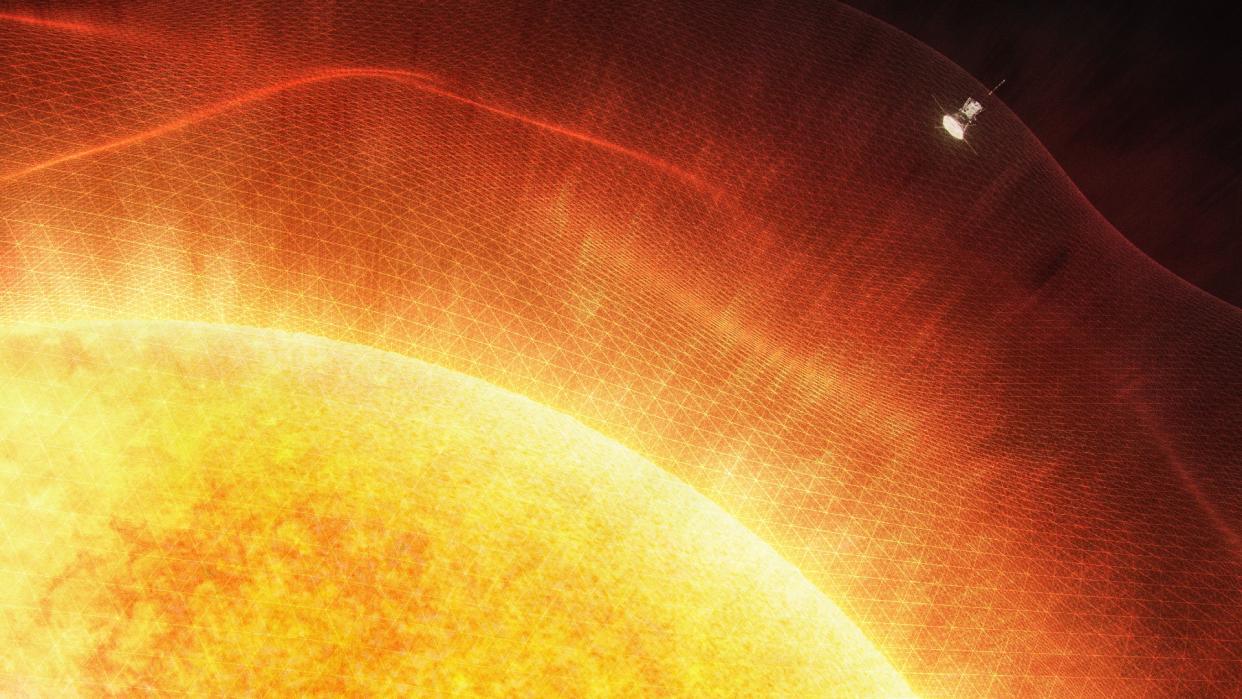Watch: NASA spacecraft flies through a violent solar explosion for 1st time ever — and survives unscathed

NASA's Parker Solar Probe has become the first spacecraft to fly through a coronal mass ejection (CME) from the sun, and it captured the whole event on camera.
The stunning video shows the spacecraft passing right through the massive solar eruption on Sept. 5, 2022. The probe soared through the churning wake of the plasma wave's leading edge (its shock wave) before bursting out the other side.
By studying the daredevil feat, scientists will piece together more of the sun's mysterious inner dynamics in a bid to better predict solar eruptions that threaten Earth. They published their findings exactly a year later on Sept. 5 in The Astrophysical Journal.
Related: Rare streaks of light above US are a sign that solar maximum is fast approaching
"This is the closest to the sun we've ever observed a CME," Nour Raouafi, a Parker Solar Probe project scientist at the Johns Hopkins Applied Physics Laboratory in Maryland, said in a statement. "We've never seen an event of this magnitude at this distance."
CMEs are smoke-ring-like eruptions spit out by sunspots, regions on the sun's surface where powerful magnetic fields, created by the flow of electrical charges, form knots before abruptly snapping. Once launched, CMEs travel millions of miles per hour, sweeping up charged particles from the solar wind to form a giant, combined wave front.
The Parker Solar Probe was launched toward the sun in August 2018. The probe is equipped with a heat shield and radiators for close solar encounters, and was flying just 5.7 million miles (9.2 million km) above the sun's surface when its camera spotted the CME lapping at its flank.
Not long after, the spacecraft plunged headfirst into the leading edge of the solar tidal wave, where it got buffeted by eddies of plasma as sparks of solar wind slalomed across its lens.
The solar probe spent two days observing the sun belch, enabling the physicists to study the CME's evolution in unprecedented detail. The scientists spotted three stages in the eruption's evolution. The first two — the shock wave and solar plasma, followed by the streaming solar wind — had been observed before. But the third stage — a trailing wake of slow-moving particles — baffled them.
RELATED STORIES
—Puzzle of the sun's mysterious 'heartbeat' signals finally solved
—Mini sun with simulated gravity could help prepare us for deadly solar storms
"You try simplified models to explain certain aspects of the event, but when you are this close to the Sun, none of these models can explain everything," lead study author Orlando Romeo, a space physicist at the University of California, Berkeley, said in the statement. "We're still not exactly sure what is happening there or how to connect it to the other two sections."
Finding out how solar eruptions work is vital for protecting our planet from intense geomagnetic storms. Although Earth's magnetic field can absorb most glancing blows from CMEs, more intense geomagnetic storms can warp it — sending satellites tumbling to Earth, frying electrical systems and potentially crippling the internet.
The largest solar storm in modern times was the 1859 Carrington Event, which released roughly as much energy as 10 billion 1-megaton atomic bombs. After slamming into Earth, the powerful stream of solar particles fried telegraph systems around the world and caused auroras brighter than the light of the full moon to appear as far south as the Caribbean.
Scientists warn that if a similar event were to happen today, it would cause trillions of dollars' worth of damage, trigger widespread blackouts and endanger thousands of lives. A solar storm in 1989 released a billion-ton gas plume that caused a blackout across Quebec, NASA reported.

